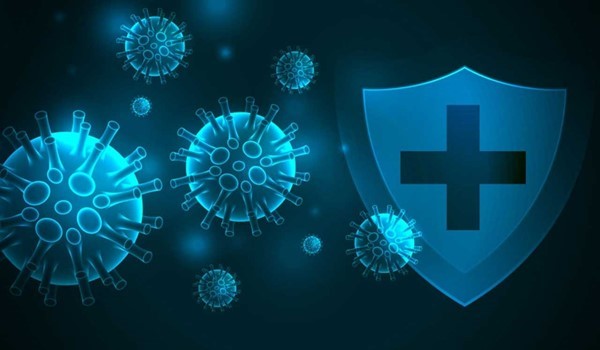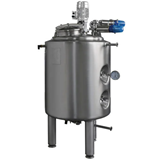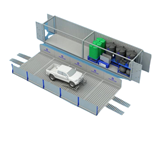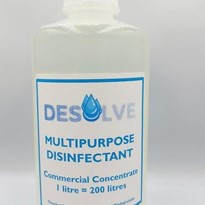The recent plight of coronavirus in countries across the globe has accrued the demand for products to wash and disinfect onerous surfaces and sanitizing vehicles and the workplace. With the rise in health outlay and therefore the rising range of COVID-19 cases, the demand and use for surface disinfectants is predicted to grow considerably. Liquid surface disinfectants are strong, biocidal, or toxic antimicrobial chemicals, which can be applied to contaminated surfaces. However, they do not come without risk…
The function of disinfectants is to kill and prevent the growth of microorganisms. Disinfectants are potentially noxious/harmful substances which are used in intensive animal production and disease control. In fulfilling this role, disinfectants may also have an adverse impact on the environment. Given that disinfectants are selected for their toxic properties, it is no surprise that these products may harm beneficial microorganisms, plant, and animal life, and even humans, considering the amount used today.
Below are the most common ingredients used and the risks they pose:
Formaldehyde

When present in the air at levels exceeding 0.1 ppm, some individuals may experience adverse effects such as watery eyes; burning sensations in the eyes, nose, and throat; coughing; wheezing; nausea; and skin irritation.
Is a highly toxic systemic poison that is absorbed well by inhalation. The vapour is a severe respiratory tract and skin irritant and may cause dizziness or suffocation. Contact with formaldehyde solution may cause severe burns to the eyes and skin.
Glutaraldehyde
Exposure to glutaraldehyde may cause the following symptoms: throat and lung irritation, asthma and difficulty breathing, dermatitis, nasal irritation, sneezing, wheezing, burning eyes, and conjunctivitis. Workers may be harmed from exposure to glutaraldehyde and is classed as hazardous waste.
Hydrogen peroxide
Is a strong oxidizer (moderate oxidizer in lower concentrations), and can be corrosive to the eyes, skin, and respiratory system. This chemical can cause burns to the skin and tissue damage to the eyes. Take special caution to avoid contact with hydrogen peroxide mist.
In a 2014 press release about sunscreen, the American Chemical Society noted that “high amounts of hydrogen peroxide can harm phytoplankton, the microscopic algae that feed everything from small fish to shrimp to whales.
Iodophors
The fumes can cause a serious headache or a migraine. Nausea and vomiting can also happen when inhaling products such as hand sanitiser. Especially with long-term use, the potent fumes of alcohol can cause problems with your digestive tract.
OPA
A potential health concern over the long-term use of OPA has been raised by reports of workers and patients experiencing contact dermatitis, as well as occupational asthma and other respiratory problems following exposure.
Peracetic acid
Is corrosive/irritating to the eyes, mucous membranes of the respiratory tract, and skin. It causes lacrimation, extreme discomfort, and irritation to the upper respiratory tract in humans after exposure to concentrations as low as 5 ppm for only 3 min.
Phenol
Exposure may cause irritation to the skin, eyes, nose, throat, and nervous system. Some symptoms of exposure to phenol are weight loss, weakness, exhaustion, muscle aches, and pain. Severe exposure can cause liver and/or kidney damage, skin burns, tremors, convulsions, and twitching
Acute toxic effects may include the death of animals, birds, or fish, and death or low growth rate in plants. Longer term effects may include shortened lifespan, reproductive problems, lower fertility, and changes in appearance or behaviour.
QACs

Can cause allergic skin rashes even with very limited exposure. Eye contact with QACs (Quaternary Ammonium Compounds) can cause burning of the eyes. Splashing concentrated QAC solution in your eye can cause severe injury including blindness. Breathing in QACs can cause irritation of the nose and throat.
QACs are toxic to a lot of aquatic organisms including fish, daphniids, algae, rotifer and microorganisms employed in wastewater treatment systems. And antibiotic resistance has emerged in microorganisms due to excessive use of QACs in household and industrial applications.
So, with all these risks to our health why do they continue to be used?
Human behaviour and chemicals
As humans, we are habitual and conditioned to act positively or negatively regardless of the impact large or small. Our latest project coincides on disinfectant use and assessing the role we all play in the problem. There is increasing awareness of the quantities of chemicals used every year across the globe; while the quality of available data varies, estimates suggest the total production is around 140 billion tonnes so far in 2021 alone. That over $4 trillion in value and not one of them has ever been tested for any cocktail effect ever.
The question here is how competent or not are we towards chemical use and the problems that arise from there use?
Our hypothesis and assumptions suggest we need to be more self-aware when our human behaviour and actions dictate the outcomes. So next time you reach for the conventional cleaner or dip the mop, give a thought for the environment, the health and wellbeing of the workplace and it the people doing the cleaning.
The next generation of green environmental cleaning
There are a plethora of unsafe and not so friendly cleaning products currently on the market and thought should also be taken into the amount of plastic generated to transport them. A double whammy for the environment.
Conventional cleaning products play a big role in shaping the indoor environment in which we live and work. To achieve their so-called desirable effects, traditional cleaners include a variety of chemicals that can have adverse effects on human health. Innovation has led to the commercial development of an eco-friendly disinfection formulation by DESOLVE that, replaces hazardous chemical-based disinfectants or biocides without negative effects on the environment, that exceed traditional cleaning standards by providing an effective, safe, and targeted approach to microorganisms. DESOLVE disinfectant is a special formulation based on multiple components which causes the elimination and disintegration of Bacteria, Virus and Fungus whilst not allowing bacterial strains to create microbial resistance.
A plastic free solution

At Desolve we are very conscious of our planet and the impact we as humans have on its future. To play our part, we are minimising the use of plastic in any of our product delivery due to the very low dilution ratios therefore, by using DESOLVE you are not only stopping chemical disinfectant waste residue entering our water systems, but you also contribute to less plastic floating in our oceans or pilling up in landfills.
A cleaner greener future
Green chemistry ensures products are environmentally safe, that the processes for making them are safe and that there is no waste, It is about avoiding the use of toxic agents that are manufactured into such products as disinfectants whilst making sure they can simply degrade into something benign when reaching the environment. With this in mind, it is our vision to ultimately minimise our environmental impact by developing new products and processes that meet the above conditions. Basically, enough is enough, rather than continually using harmful and hazardous products just switch to new more innovative technologies for the sake of the planet and who we leave it to.






-160x160-state_article-rel-cat.png)



-160x160-state_article-rel-cat.png)
-160x160-state_article-rel-cat.png)












